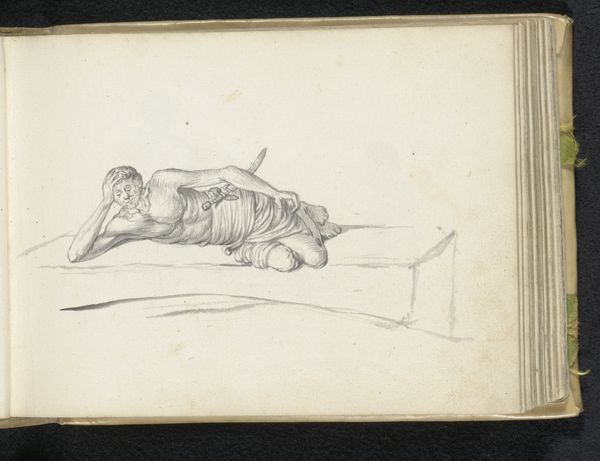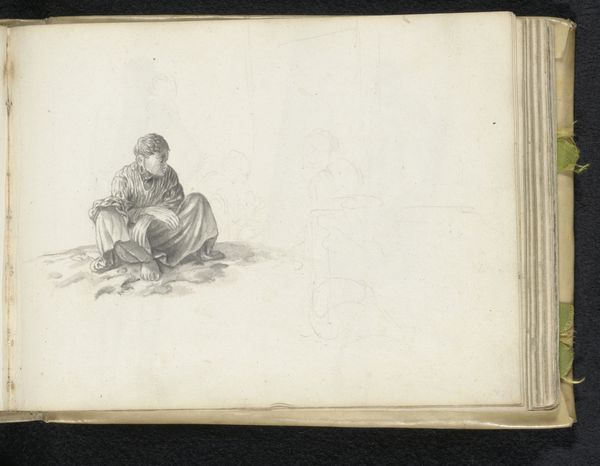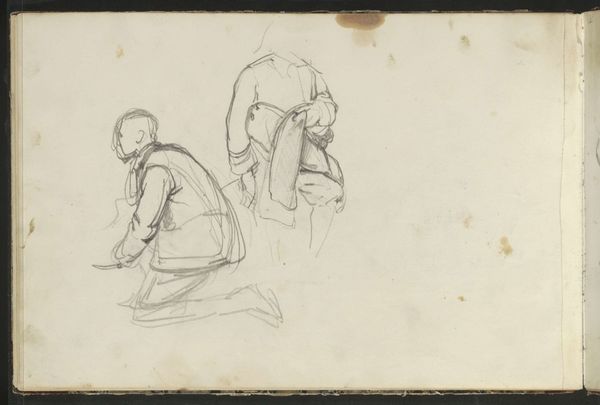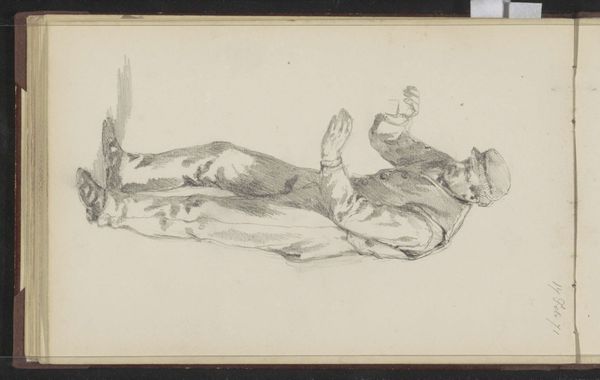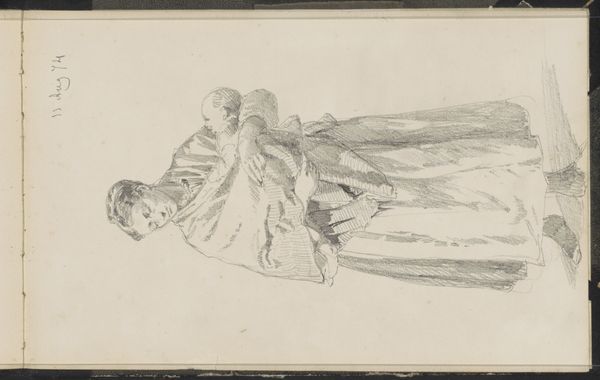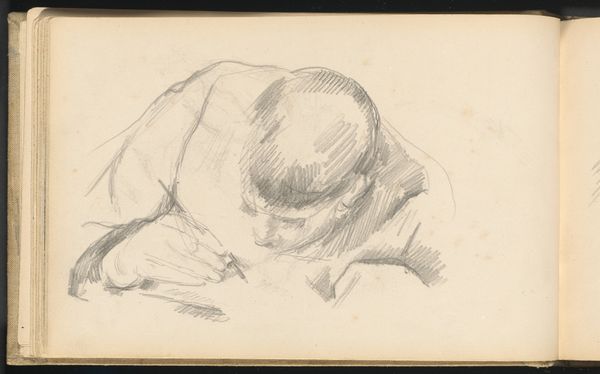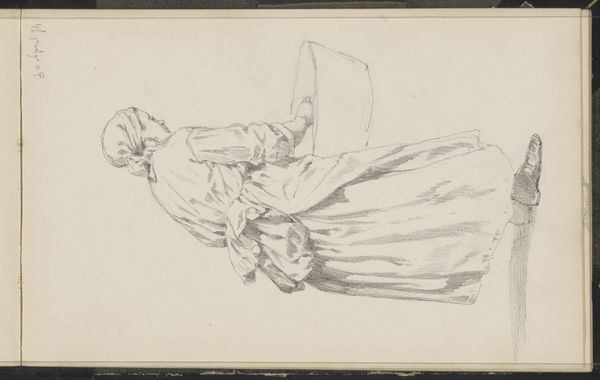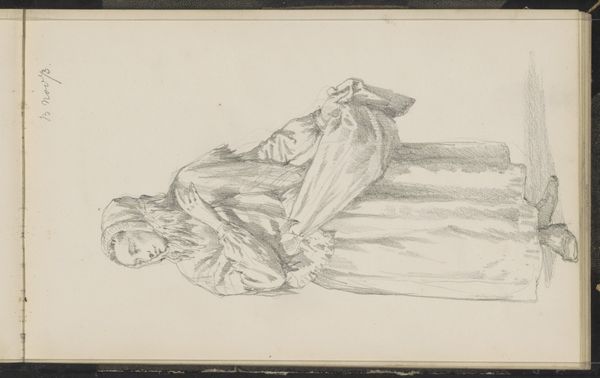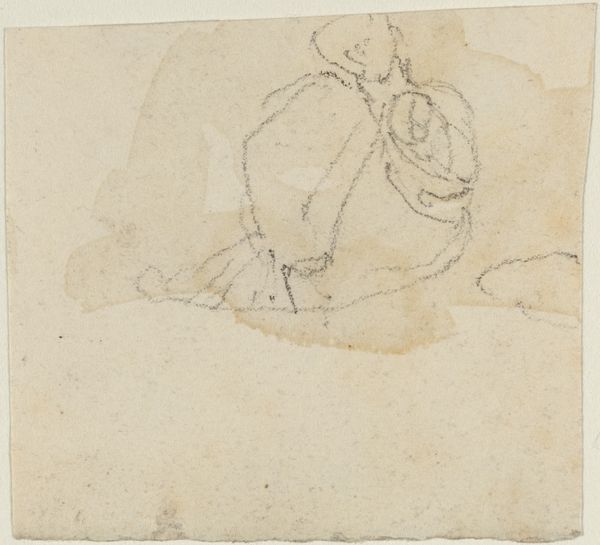
drawing, pencil
#
portrait
#
drawing
#
toned paper
#
light pencil work
#
quirky sketch
#
dutch-golden-age
#
sketch book
#
figuration
#
personal sketchbook
#
intimism
#
coloured pencil
#
pen-ink sketch
#
pencil
#
sketchbook drawing
#
genre-painting
#
storyboard and sketchbook work
#
sketchbook art
#
realism
Dimensions: height 148 mm, width 196 mm
Copyright: Rijks Museum: Open Domain
Curator: This sketch, titled "Man sleeping on a mat on the ground," was created by Esaias Boursse around 1662, employing light pencil work on toned paper. What strikes you initially? Editor: The figure's vulnerability. There's an honesty in the pose, almost intimate. The stark simplicity of the lines contributes to the drawing's quiet intensity. It feels deeply personal. Curator: Indeed, Boursse captures a moment of repose with delicate precision. We observe how he carefully modeled the figure's body with subtle gradations of tone, creating a palpable sense of depth despite the minimal setting. Notice also the treatment of light and shadow on the draped cloth. Editor: I'm more drawn to thinking about this in its context. Boursse was painting at the height of the Dutch Golden Age, but rather than glorifying mercantile success or civic pride, he offers this unassuming study of, essentially, a common man resting. Was he intending to highlight societal disparities? Curator: It's interesting you should mention disparities, as from a formal standpoint, one could consider the contrasting textures as visual metaphor—the smoothness of skin against the rough, perhaps woven texture of the mat. What symbolic weight might such stark juxtapositions possess? Editor: Or is the symbolic weight born from a period obsessed with representing domestic comfort? A contrasting point being made through this unglamorous version of home life, as he portrays a solitary figure and highlights the basic necessities – or lack thereof – in 17th-century Holland. How might its realism challenged more conventional portraits of the wealthy and powerful? Curator: A compelling argument for a commentary on class and comfort! We might also consider the intimate scale as integral to the work's reception. Its size dictates a closeness, compelling us into an immediate visual transaction with the reclining figure. Editor: Absolutely, its intimate scale, almost as if lifted from a personal sketchbook, urges an intimate interaction. And ultimately that’s how the painting retains its interest for me - both humble and engaging in equal measure. Curator: For me, I appreciate that despite its ostensible modesty, the sketch prompts deeper scrutiny. From tone to texture, it subtly balances observation with carefully orchestrated artifice. A masterful piece, certainly.
Comments
No comments
Be the first to comment and join the conversation on the ultimate creative platform.
